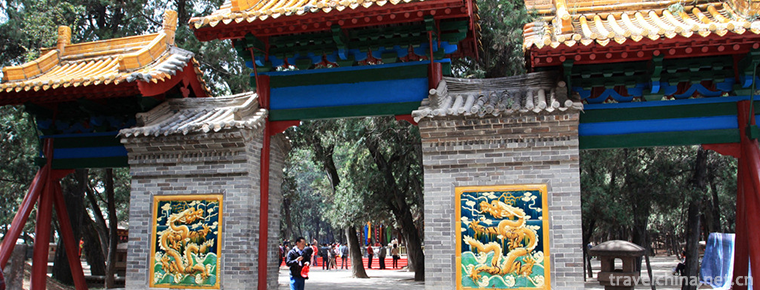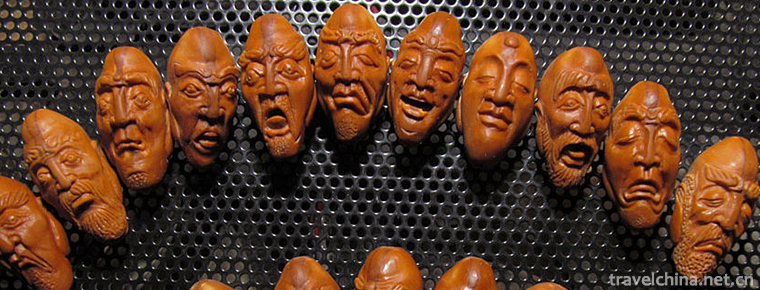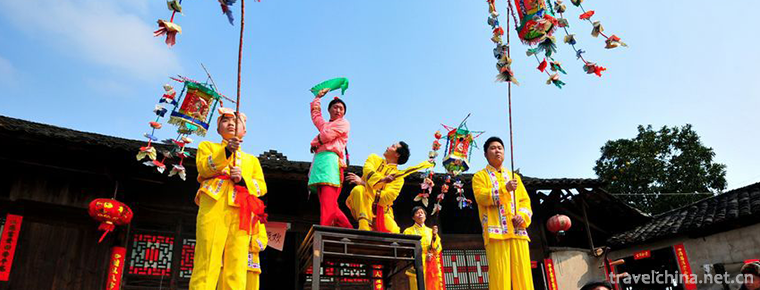Neijiang economy
Neijiang economy
In 2019, the GDP of Neijiang City will reach 143.33 billion yuan, an increase of 7.8% over the previous year in terms of comparable prices. Among them, the added value of the primary industry was 24.050 billion yuan, an increase of 2.9%; the added value of the secondary industry was 48.988 billion yuan, an increase of 8.9%; the added value of the tertiary industry was 70.292 billion yuan, an increase of 8.8%. The GDP per capita increased by 383.8 yuan. The three industrial structures were adjusted from 17.4:38.8:48.8 in the previous year to 16.8:34.2:49.0.
In 2019, the added value of private economy in Neijiang City will reach 85.514 billion yuan, 7.9% higher than that of the previous year, accounting for 61.8% of GDP and 0.2% higher than that of the previous year. The consumer price index rose by 3.5% over the previous year. Among them, the prices of food, tobacco and alcohol increased by 10.3%, the prices of medical and health care increased by 2.8%, the prices of residential products increased by 1.7%, and the prices of daily necessities and services increased by 0.4%. The ex factory price index of industrial producers was 3.5% higher than that of the previous year, and the purchasing price index of industrial producers was 9.7% higher than that of the previous year.
In 2019, Neijiang completed the investment in fixed assets of the whole society, an increase of 12.1% over the previous year. Among them, the tertiary industry investment accounted for 67.3% of the total fixed asset investment. There were 1015 new projects (excluding real estate) in the whole year.
In 2019, the local general public budget revenue of Neijiang City is 6.364 billion yuan, an increase of 9.3% in the same caliber, of which the tax revenue is 3.965 billion yuan, with an increase of 8.1% in the same caliber. The general public budget expenditure was 27.205 billion yuan, an increase of 11.8%.
In 2019, the per capita disposable income of all residents in Neijiang City is 25508 yuan, an increase of 10.0% over the previous year. In terms of permanent residence, the per capita disposable income of urban residents was 36059 yuan, an increase of 9.3% over the previous year. Among them, the net income from property increased by RMB 1 893.16%, the net income from property increased by RMB 1 893.16%, and the net income from property increased by RMB 1 893.14%, and the net income from property increased by RMB 1 893.16%. Per capita consumption expenditure was 22370 yuan, an increase of 9.5%. Among them, the expenditure on housing increased by 6.3%, the expenditure on daily necessities and services increased by 4.0%, and the expenditure on transportation and communication increased by 11.1%. The Engel coefficient of urban residents was 33.5%.
In 2019, the per capita disposable income of rural residents in Neijiang City will reach 16450 yuan, an increase of 10.3%. Among them, wage income was 6498 yuan, an increase of 8.3%; net operating income was 5255 yuan, an increase of 12.0%; net property income was 448 yuan, an increase of 18.8%; net transfer income was 4249 yuan, an increase of 10.6%. The per capita living consumption expenditure of rural residents was 13008 yuan, an increase of 10.8%. Among them, residential consumption increased by 8.6%, consumption of daily necessities and services increased by 11.5%, transportation and communication expenditure increased by 10.2%, and health care consumption increased by 15.3%. The Engel coefficient of rural residents was 38.1%.
On February 2, 2019, it was rated as a municipal advanced unit of national grass-roots TCM work by the State Administration of traditional Chinese medicine.
On July 5, 2019, the Ministry of ecology and environment of the people's Republic of China announced the special investigation of black and odorous water bodies in the first stage of overall planning and strengthening supervision in 2019. Neijiang was listed in the list of cities whose black and odorous water body elimination ratio was less than 80%, and the elimination ratio was 0%.

-
Boundary Island Scenic Area
Border Island Eco-cultural Resort, a national 5A class tourist attraction, covers an area of 0.45 square kilometers. Located at the exit of Niuling 15 of Haikou Sanya East Highway, Hainan Province.
Views: 139 Time 2018-12-12 -
Huangdi Mausoleum Scenic Area
Huangdi Mausoleum is the tomb of Xuanyuan Huangdi, the ancestor of the Chinese nation. It is the only Huangdi Mausoleum recorded in Historical Records..
Views: 152 Time 2018-12-12 -
Shangrao Lingshan Scenic Area
Shangraolingshan Scenic Area, located in the north of Shangrao County, Shangrao City, Jiangxi Province, is a national scenic spot with an area of 160 square kilometers. Lingshan is listed as the ".
Views: 119 Time 2018-12-19 -
Hanguguan Historical and Cultural Tourist Area
Hangguguan Historic and Cultural Tourist Area is a national AAAA-level scenic spot built by Lingbao Municipal Committee and Municipal Government with an investment of 589 million yuan..
Views: 216 Time 2018-12-26 -
Stone carving
Stone carving is a traditional Chinese folk micro-sculpture process. The peach stone, apricot stone, olive stone and walnut are carved into handicraft products, which have been listed in the second ba.
Views: 245 Time 2019-05-03 -
Jingdezhen Handmade Porcelain Craft
Jingdezhen Handmade Porcelain Craft, the traditional handmade Porcelain Craft in Jingdezhen City, Jiangxi Province, is one of the national intangible cultural heritage..
Views: 123 Time 2019-05-08 -
Burning Techniques of Linqing Gong Bricks
Linqing fired tribute brick is an ancient handicraft. Beginning in the early Ming Dynasty, Yongle's firing technology is the unique experience accumulated by the working people in Linqing of Shandong .
Views: 95 Time 2019-05-13 -
lion dance
Lion dance, also known as "Lion Dance", "Lion Lantern", "Lion Dance", "Lion Dance", "Lion Dance", is one of the folk dances of all ethnic groups in Ch.
Views: 81 Time 2019-06-14 -
Xiushan Festive Lantern
Xiushan lantern is an important school of lantern art in southwest China. It is a folk cultural phenomenon and folk performing art that integrates religion, folk custom, singing and dancing, acrobatic.
Views: 80 Time 2019-07-08 -
Chengdu Technological University
Chengdu Institute of Technology is a public full-time general undergraduate school organized by the People's Government of Sichuan Province. Founded in 1913, the school is the first industrial school .
Views: 285 Time 2019-08-31 -
Dispute on the meaning of Cheongsam
Under the influence of the Qing Dynasty's Qiren's robes, women's gowns have been referred to as cheongsam since the Republic of China. Due to the influence of the environment at that time, most people know that the women of the Manchu and Qing Dynasty had their own cheongsam,.
Views: 121 Time 2020-12-11 -
Leshan Education
In 2018, Leshan Normal University, School of engineering and technology of Chengdu University of technology and Leshan vocational and technical college enrolled 16051 students, including 52775 students, 13837 graduates and 2509 full-time teachers..
Views: 352 Time 2020-12-17









